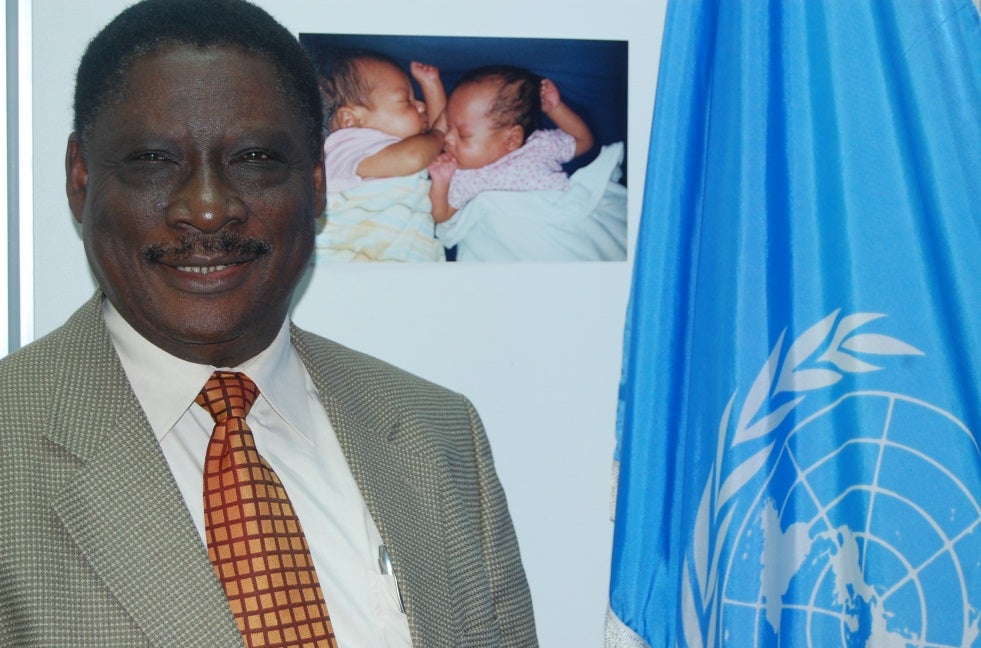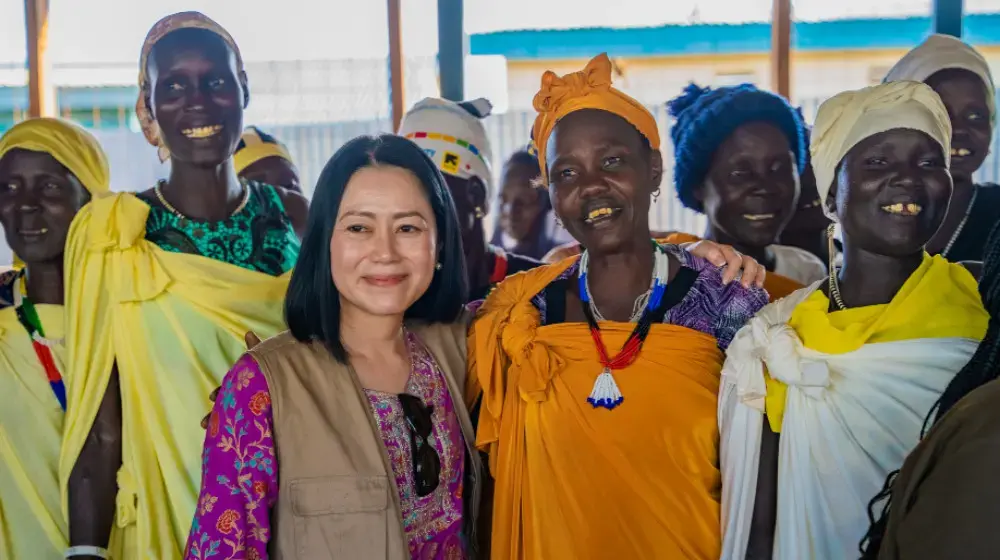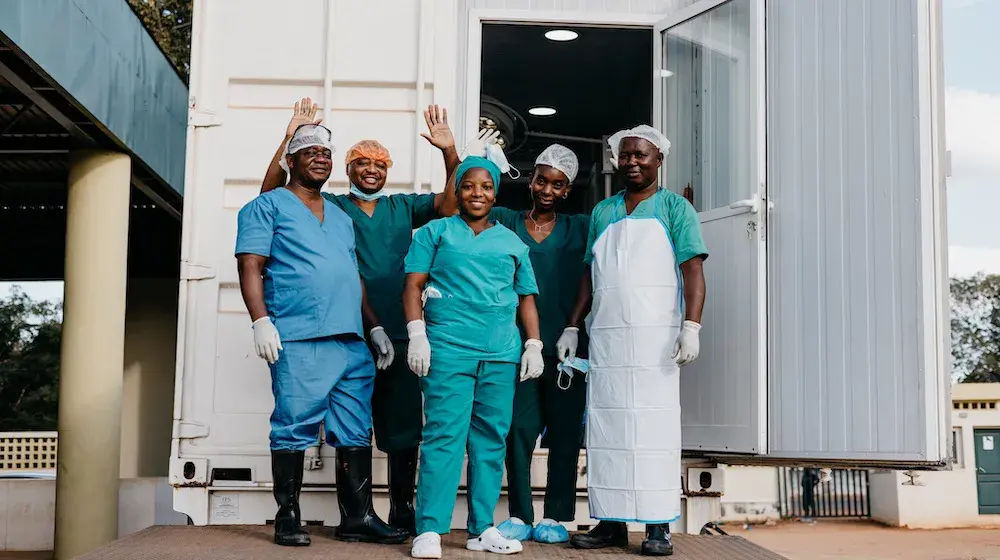The four-day workshop opened on Tuesday 28 May at the Laico Regency Hotel, Nairobi with participants drawn from UNFPA offices in Kenya, Ethiopia, Eritrea, Madagascar, Malawi, Mozambique, South Africa, South Sudan, Zimbabwe, Botswana, Comoros, Namibia, Burundi, Swaziland, Uganda, Lesotho, Democratic Republic of Congo, Denmark and USA (New York Headquarters).

Distinguished Colleagues, participants, ladies and gentlemen.
I am indeed very honoured and privileged to be called upon to make on opening remarks at this very important workshop. On behalf of the Director of the East and Southern Africa Regional Office (ESARO) and on my own behalf, let me welcome you all most warmly. Special welcome to our colleagues from East and Southern Africa Regional Office (ESARO), Procurement Services Branch (PSB) Copenhagen and the UNFPA Headquarters, for taking time to attend and facilitate this workshop.
The key objectives of this simulation workshop include strengthening the capacity of UNFPA Country, Regional offices as well as the Headquarters to prepare for and implement coordinated, timely and effective humanitarian assistance in crises settings. Another key objective is to learn how communication activities can be part of programmatic work that informs humanitarian response.
Let me start by sharing a bit of background. In 2011, Sub-Saharan Africa recorded the highest number of Internally Displaced Persons (IDPs) estimated at 9.7 million out of a total of 26.4 million globally (IDMC-NRC, Global overview, 2011). Sub-Saharan Africa also had second highest number of refugees totaling 2,693, 400 out of 10.4 million refugees worldwide. This was second only to Asia and the Pacific Region (UNHCR, Global trends in 2011).
While less numbers of people seem to die from conflicts than in the past, regrettably more civilians appear to be exposed and vulnerable to violence with the state offering less protection. Most of the affected persons in humanitarian crisis are women and children, who tend to bear the far-reaching impacts of such disasters.
Unfortunately, global social and economic trends indicate that displacement will continue to grow in the next decade, exacerbated by population growth, urbanization, natural disasters, climate change, rising food prices and conflict over scarce resources. This region is not an exception. UNFPA as part of the humanitarian community is committed to providing utmost security conditions for its staff and their families as well as ensuring that issues pertinent to humanitarian settings are included in its programming.
The security risk management approach adopted by UNFPA requires careful appreciation of threats in an operationing environment; analysis to determine the likelihood of dangerous events and their possible impacts; weighing of risks against the importance of the humanitarian work as well as UNFPA staff and families. On all these scenarios, the role of program criticality in humanitarian response cannot be over-emphasized.
UNFPA's Strategic Plan 2008-2013 guides emergencies and humanitarian assistance by focusing on supporting capacity development and on building commitment for integrating the ICPD Programme of Action into emergency preparedness, humanitarian crisis response and transition, and recovery processes at the national level. In addition, strengthening humanitarian response is one of UNFPA's key deliverables within the organizational priorities in 2013.
Specific to this workshop are issues related to the inception of a new Fund-wide communication strategy, which takes cognizance of effective and coordinated communications in emergencies and is deemed as priority. Communicating in humanitarian settings supports cohesive advocacy messages targeted at donors, partners, civil society and communities so as to help ensure that there is sustained support for action, early recovery, sustained recovery, peace building and for supporting the resilience of communities.
It is imperative therefore that UNFPA strengthens communication in emergencies both internally and externally. Good communication will no doubt improve UNFPA's visibility and accountability, as stakeholders are kept informed of our crucial interventions.
The second generation humanitarian strategy endorsed by the executive committee in January 2012 has five priority areas with preparedness being one of the Fund-wide priorities. It is operationalized for the first time through two key instruments namely; The Standard Operating Procedures (SOPs) and Fast Track Procedures (FTPs), to improve the timeliness and appropriateness in response.
The Standard Operating Procedures provide an organizational framework for enabling timely decision making and accountability at various organizational levels on critical humanitarian programming decisions. They define WHY (the SOPs), WHAT (UNFPA mandate in humanitarian situation), the HOW (mandate is implemented), WHO (responsible persons for intervention) and the WHERE (to seek support).
Also in place is the Fast Track Procedures that are a set of procedures that offer UNFPA Country Offices flexibility in accelerating program delivery in both humanitarian and fragile contexts. The FTPs cover Program Management, Finance Management, Human Resources and Procurement.
A number of countries have activated the FTPs in the East and Southern Africa Region namely Comoros, Ethiopia, Kenya, Mozambique, Swaziland and Uganda. These countries have had some challenges implementing the FTPs and this workshop will help improve the understanding of the vital instruments by colleagues at the country offices (main focus at UNFPA) and the regional offices. This will hopefully go a long way in improving UNFPA's timeliness, visibility and accountability in humanitarian response.
In conclusion colleagues, distinguished guest and participants, let me seize this opportunity to encourage all of you to seize this rare opportunity presented by this workshop to participate actively and challenge yourselves.




